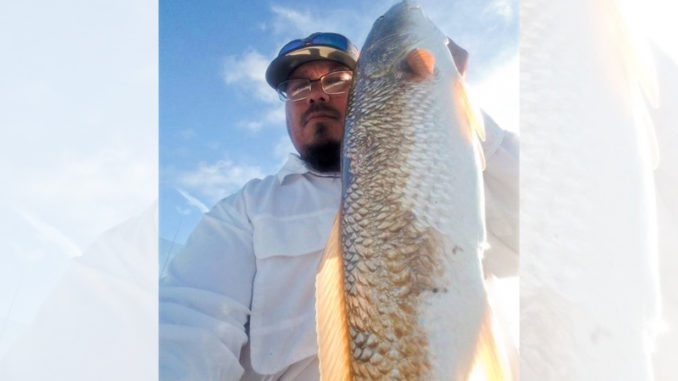
Find cold water redfish around inlets, shallow beaches
In a typical winter, cold weather and cold water force most of North Carolina’s saltwater baitfish and gamefish to migrate south or offshore. So catching a flounder or speckled trout can be tough, but winter redfish is a different story.
Red drum don’t seem to mind the cold water. They can spend winter days this month hanging around inlets and shallow beaches that receive sunlight.
One of fishing’s awesome sights is water that seems to glow orange because of sunlight reflected off the backs of reds just off a beach.
“If you go through an inlet and the water conditions are good, you can see hundreds — sometimes as many as 500 reds — in one school behind the breakers,” said guide Junior Sinclair of Fish Bones Charters in Jacksonville, N.C. “I did a lot of drift-fishing (inlets) from the time I was six or 7-years-old. That’s when I started seeing reds in the winter behind breakers.”
Sinclair (910-358-2692) likes to cruise off the beaches of Bear and Browns islands, looking for diving birds or red-tinged water.
Stick with soft plastics
When he was young, Sinclair fished mostly with cut bait and live baits. But now he uses artificial soft-plastic lures. They’re more versatile and can be fished year-round.
“I like to throw a Redfish Magic (spinnerbait), but (I) remove the spinner for surf reds,” he said. “I do add a pearl-colored, 3-inch Strike King paddletail grub to it.
“I like the toughness of its body because a redfish can chew up plastic lures pretty quick. You can catch multiple fish with it because they can’t beat it up.”
Sinclair said the “best bite occurs at the top of the high tide or on both sides of a falling tide.”
Sometimes in extremely calm conditions, walking lures such as Zara Spooks that resemble wounded baitfish will elicit strikes.
Sinclair likes a medium-action, 7-foot Fenwick rod mated to a Penn Battle reel and spooled with 10-pound Power Pro Braid and 3 feet of fluorocarbon leader. The small-diameter, braided line allows him to cast lures long distances, necessary because schooling redfish are notoriously spooky.
“Reds start to break up and start schooling in late November and early December,” he said. “If I’m inside, I like to find a little hole in an oyster bed. Sometimes you can see them right in the holes, because the water’s usually clear that time of year.”
Only a strong nor’easter can spoil conditions if the water muddies, making lures difficult to see, or if it chops up the surf too much, making it tough on anglers to keep their balance.



Be the first to comment